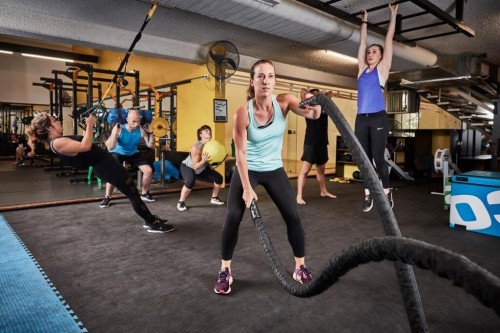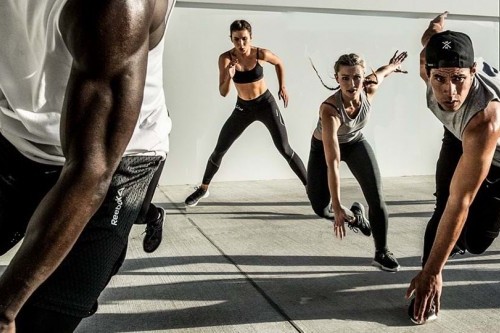UNSW researcher highlights the benefits of HIIT

A University of NSW Sydney exercise physiology researcher has this week highlighted how the benefits of high-intensity interval training (HIIT) have become clearer in recent years with accumulating research showing it was effective for improving aerobic fitness and cardiovascular-related health indicators, such as blood pressure, body fat levels and glucose control.
Dr Andrew Keech has explained “in my main area of expertise - cardiac benefits - it was a seminal study in 2007 by Ulrik Wisloff, a leading Norwegian exercise scientist, that applied HIIT successfully to cardiac rehab patients with an average age of 75 years that started the ball rolling in HIIT research.
“The evidence is clear that HIIT is superior to traditional moderate-intensity continuous training (MICT) - for example, the long slow jog - for improving aerobic fitness. Having a high level of aerobic fitness is important for your health.
“Aerobic fitness is an index of how well a range of bodily systems are functioning and it’s a strong, independent predictor of mortality risk, especially for cardiovascular disease which causes things like heart attacks.”
Dr Keech said HIIT also appears to offer long-term benefits for those who remained committed for months.
“We can infer from sustained longer-term improvement in aerobic fitness that HIIT likely induces more heart muscle and a larger chamber size, meaning more blood can be pumped out per beat. This is called left ventricular hypertrophy and is a longer-lasting change.
“For many people, this is the most important change to strive for - a stronger, healthier heart is a big end goal.
“HIIT also offers other cardiovascular benefits. Multiple meta-analyses studies have shown HIIT is more effective than MICT for improving glucose control and insulin sensitivity, so it is especially good for lowering diabetic risk.”
The UNSW Medicine exercise physiology researcher, who has been studying the science of exercise for 20 years, says most sports - such as rugby league, basketball and tennis - follow an unstructured form of HIIT, advising “efforts are generally short and vigorous and then the athlete rests for a short period before another hard effort.
“So, HIIT is a fancy way of saying, ‘work hard for a while, recover and then do it all again’. This is what athletes have been doing for many years.
“But as a formal structured exercise program, it was probably Tabata training in the 1990s that brought HIIT into the mainstream worldwide.”
Dr Keech goes on to say that even for those who have rarely exercised, it’s never too late to start doing HIIT, explaining “when you get fitter, you lower your risk of early mortality and this is especially important for those who have not exercised much in their life - you can get great benefit from starting regular exercise..
“For people who are generally healthy but otherwise sedentary, start conservatively with MICT and then gradually build HIIT into the program - either form of training will deliver improvements in aerobic fitness within the first few weeks.
“This is largely from increases in blood volume because having more blood in your body leads to more oxygen reaching your working muscles, but these benefits will be lost if you give up regular exercise.”

Dr Keech said people with chronic disease could also benefit from HIIT - as long as they had adequate supervision and guidance, adding “HIIT has been applied in a wide range of chronic illness populations in the past few years - such as people who have survived stroke or have kidney disease, non-alcoholic fatty liver disease or cancer.
“We use HIIT with cardiac rehab patients in Prince of Wales Hospital with strict safeguards - pre-training heart health screening with a cardiologist, regular checking of blood pressure and symptoms, strict adherence to the prescribed exercise program - and in this setting it has been shown to be relatively safe.
“We are now designing a study that will investigate the feasibility of HIIT in patients with severe liver disease at St George Hospital.”
Dr Keech said one of his studies, a meta-analysis, showed HIIT and MICT both led to, on average, about two kilograms of fat loss after about 10 weeks of training, three times a week - without any dietary change.
He added “fat loss through exercise is not accompanied by any great weight loss because you lose fat but can gain weight via other means. An increase in muscle mass occurs a little bit, but it also comes from blood volume increases.
“This can increase your body weight by half a kilo or so - initially it’s from water retention leading to plasma increases, then the kidneys detect this change and start the process to pump out more red blood cells.
Dr Keech said people should therefore not rely on weight loss to evaluate the benefits of exercise, including HIIT, commenting “waist circumference is likely a better index of exercise-induced fat loss, which is an under-appreciated point in the community.
“Most of us just use body weight scales at home and see little change after many weeks or months of training. But those scales won’t tell you if you have lost fat and put on muscle and blood weight.
“Gaining muscle and blood are excellent adaptations, while losing fat is also very important for improving health. So, achieving all three changes is great. But you won’t know of this if you just look at your weight scales.”
Advising that the cardiac patients he worked with enjoyed a big confidence boost from doing HIIT - knowing they could safely exert themselves after surviving a heart attack - so, it could help many other people keep fit, too, Dr Keech concluded “HIIT is not a passing fad - it is a genuine intervention with a range of advantages over MICT, including time-efficiency, enjoyment and the challenge of mastering a concentrated form of exercise.
“If you design a HIIT program thoughtfully - for example, with shorter bursts or longer rest periods and build up gradually - you can limit the sense of discomfort or fatigue that many people find unappealing about exercise.
“Remember, the human body likes to work hard and while results from exercise vary across individuals, HIIT can encourage positive changes that improve health and ultimately, lower the risk of an early death.”
Images: Hiscoes Gym (top) and Les Mills (below).
Related Articles
16th November 2020 - Viva Leisure continues expansion with 91st facility opening and record membership numbers
16th November 2020 - Radical Fitness Australia names newest member of its Master Trainer team
13th November 2020 - UNSW seeks new fitness and aquatic centre management partner
9th November 2020 - F45 recognised again for delivering highest level of customer satisfaction
30th October 2020 - Australian Institute of Fitness announces new partnerships with Functional Training Institute, goxpro, Gyymi and ph360
29th October 2020 - Fitness Australia advise that risk of infection in a gym is less than ‘one in a million’
2nd October 2020 - UNSW Law academic shares the implications of new environmental laws for koala survival
8th October 2020 - Global Wellness Institute reports Asia-Pacific having largest economic growth in fitness, sport and recreation sectors
23rd September 2020 - Pilates, strength training and yoga the most popular classes as Australians return to fitness facilities
22nd June 2020 - Les Mills sees 700% rise in users in the Middle East during Coronavirus crisis
25th July 2019 - Canberra’s Project Fitness Group to transition to HIIT Republic brand as it joins Viva Leisure stable
17th January 2019 - Research shows HIIT training as more than another fitness fad
13th November 2018 - HIIT Factory plans 15 new franchised studios
22nd July 2018 - Les Mills’ Bryce Hastings suggests upper limit for HIIT training
29th March 2017 - Study shows HIIT the best exercise for anti-ageing
9th October 2014 - Picking the difference between fitness fads and fundamentals
4th November 2011 - UNSW reopens ‘finest university sporting facilities’






